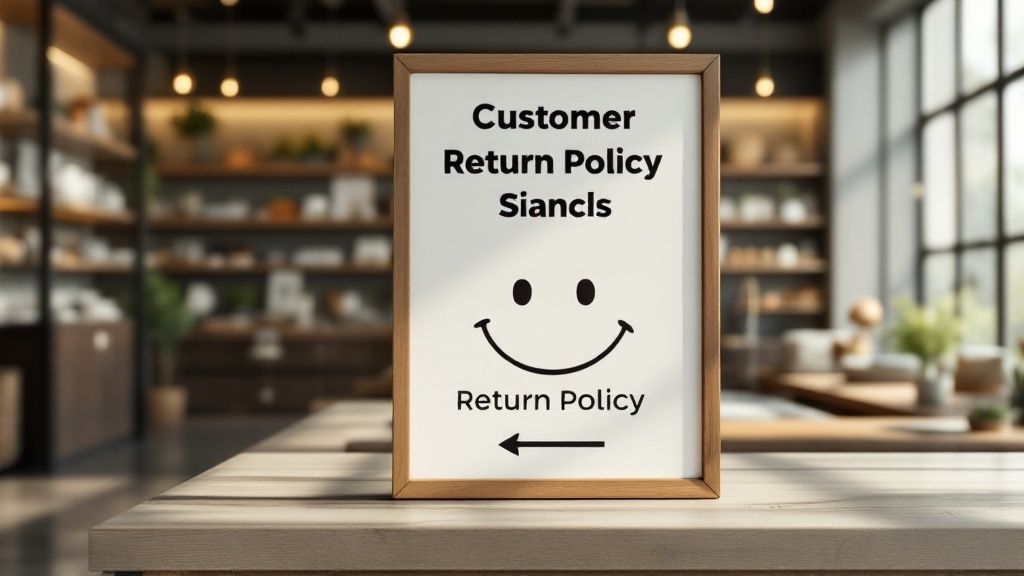How to Reduce Cart Abandonment: 6 Proven Strategies That Actually Work
December 16, 2024

Crafting High-Converting Recovery Email Campaigns

Email campaigns are one of the most powerful tools for recovering abandoned shopping carts and recapturing lost sales. When done right, these emails do more than just remind customers – they provide a clear path back to purchase while addressing common objections. Creating effective recovery emails is essential for any online store looking to maximize revenue from interested shoppers.
Timing Is Everything: The Abandoned Cart Email Sequence
The timing of recovery emails can make or break their success. Best practices suggest sending the first email within one hour after cart abandonment to catch customers while their interest is still fresh. For example, if someone leaves items in their cart at 2:00 PM, aim to send the first email by 3:00 PM. Follow up with a second email 24 hours later, perhaps offering free shipping as an incentive. The third and final email, sent around 72 hours after abandonment, works best when it creates some urgency through a time-limited discount or gentle reminder about limited stock.
Subject Lines That Grab Attention
Your subject line acts like a store window – it determines whether customers will engage further. The most effective subject lines are brief, personal, and spark curiosity or urgency. Rather than generic text like "You left something in your cart," try "Still thinking about that perfect [product name]?" or "Quick reminder – your cart expires soon!" This personal touch, especially mentioning specific products, helps achieve open rates around 39%.
Personalized Content That Converts
The email content needs to connect with each customer individually. Include clear product images, names, and pricing details from their cart. Highlight key benefits and unique features that make your products special. For instance, if someone abandoned athletic shoes, emphasize the comfort technology or stylish design elements. This reinforces the value and helps customers remember why they were interested initially.
Building Authentic Connections
While automation makes email campaigns efficient, keeping a genuine, helpful tone is crucial. Skip the hard sell and focus on being useful with reminders and relevant details. Consider including customer reviews, testimonials, or suggestions for complementary items. Make customer service contact information prominent to address any concerns preventing purchase. This balanced approach positions your emails as helpful resources rather than pushy sales messages. The results speak for themselves – well-crafted recovery campaigns using three emails generate an average of $24.9 million in recovered revenue.
Mastering the Psychology of Shipping and Pricing

Cart abandonment remains a significant challenge for online stores, with shipping costs being a primary pain point. Studies show that 41% of shoppers abandon their carts specifically due to high shipping fees. While offering free shipping may seem like an obvious solution, it's not always financially viable for businesses. This means merchants need a deeper understanding of customer psychology to effectively present both shipping costs and pricing.
Transparent and Predictable Pricing
Being upfront about all costs from the start is crucial for building trust with customers. Just as diners dislike hidden charges appearing on their restaurant bill, online shoppers want clarity on the total price they'll pay, including shipping, taxes, and any additional fees. When customers encounter unexpected charges late in the checkout process, they often feel frustrated and misled. By displaying a clear cost breakdown early in the shopping journey, businesses enable customers to make informed decisions and reduce the likelihood they'll abandon their cart.
Strategic Free Shipping Thresholds
Rather than offering blanket free shipping, setting a minimum purchase threshold can effectively boost sales while managing costs. For example, showing customers how close they are to reaching free shipping with a progress bar creates an engaging experience that encourages adding more items to cart. This approach transforms shipping costs from a potential barrier into a sales driver by giving shoppers a clear goal to work toward. The key is clearly communicating the threshold throughout the shopping experience, from product pages to cart summary.
Dynamic Pricing and Shipping Displays
Showing personalized shipping options based on customer location and cart contents helps prevent unpleasant surprises at checkout. This is especially important for international orders or remote locations where shipping costs vary significantly. Offering multiple shipping speeds and price points, from express delivery to standard shipping to in-store pickup, lets customers choose what works best for their timeline and budget. When shoppers have flexibility in their shipping options, they're less likely to abandon their purchase due to shipping constraints.
Exit-Intent Optimization to Reduce Cart Abandonment
When used thoughtfully, exit-intent popups can help recover sales from customers who are about to leave. The key is offering genuine value rather than simply pleading with shoppers to stay. A limited-time discount or free shipping offer directly addresses common hesitations about completing the purchase. By testing different messages and incentives, businesses can find the right balance between effectiveness and user experience. The goal is to provide a compelling reason to complete the purchase without creating frustration. When shipping and pricing strategies align with customer psychology, businesses can create a more positive shopping experience that reduces cart abandonment and increases sales.
Building a Frictionless Path to Purchase
The success of an online store often comes down to making the buying process effortless for customers. Just like drivers prefer a smooth highway over a bumpy road, shoppers gravitate toward checkout experiences that feel seamless and straightforward. This section explores how to create that smooth path to purchase.
Streamlining the Checkout Process
Research shows that 22% of shoppers abandon their carts because the checkout takes too long. The solution is making the process simpler and faster. One effective approach is offering guest checkout, which lets customers buy without creating an account. You can also combine redundant form fields – for instance, if shipping and billing addresses match. Small changes like these make a big difference in keeping customers moving through checkout.
Implementing Smart Defaults and Auto-Fill
Make life easier for returning customers by remembering their details. Pre-filling information like names, addresses and payment methods saves time and reduces errors. You can also set smart defaults for shipping and payment options based on what customers chose before. These small conveniences add up to create a more pleasant checkout experience.
Designing an Intuitive and User-Friendly Interface
The checkout page should be clean and easy to understand. Include clear visual guides like progress bars to show customers where they are in the process. Keep the design consistent with your main site to maintain trust and familiarity. Simple navigation and clear instructions help guide customers smoothly through each step. For more tips on optimizing your checkout, see: 10 Shopify Checkout Customization Tips to Boost Sales in 2024.
Optimizing for Mobile Devices
With 85.65% of mobile shoppers abandoning their carts, creating a smooth mobile checkout experience is essential. Focus on making pages responsive across all screen sizes. Use large, easy-to-tap buttons and minimize scrolling. A well-designed mobile checkout can significantly boost sales, since more people are shopping on phones than ever before. Even small improvements to the mobile experience can recover thousands in lost sales for businesses processing high transaction volumes. The key is removing friction at every step, making it as easy as possible for customers to complete their purchase.
Optimizing the Mobile Shopping Experience

Mobile sales make up a major portion of online shopping today, yet face a significant challenge – cart abandonment rates of 85%, compared to just 73% on desktop. This stark difference highlights why businesses need to focus on creating smooth mobile shopping experiences. Just as brick-and-mortar stores need clear layouts and proper signage, mobile stores must be easy to navigate on small screens.
Understanding Mobile User Behavior
The first step in reducing mobile cart abandonment is understanding what causes it. Mobile shoppers often browse while multitasking – waiting in line, commuting, or dealing with other distractions. They have less patience for slow load times or complex checkout processes. For example, a customer trying to complete a purchase during their bus ride will quickly give up if faced with tiny buttons and endless form fields.
Designing Touch-Friendly Interfaces
Mobile interfaces need to work well for people on the move. This means including larger buttons that are easy to tap, simple forms, and clear visual guides through the purchase flow. Picture trying to hit a small "Add to Cart" button while walking – it's frustrating and likely to lead to errors. That's why elements like navigation menus, product images, and especially checkout buttons need to be sized and placed for easy touch interaction.
Optimizing Critical Mobile Moments
Several key points in the mobile shopping journey affect whether customers complete their purchase:
- Product Discovery: Fast-loading product pages with high-quality, zoomable images
- Adding to Cart: Easy-to-spot and tap "Add to Cart" buttons
- Checkout Process: Quick checkout with auto-fill, guest options, and mobile payment methods like Apple Pay or Google Pay
- Payment Confirmation: Clear order details and shipping information
Getting these moments right makes a real difference. For instance, when businesses simplify their mobile checkout by adding one-tap purchasing, they often recover thousands in previously lost sales.
Leveraging Mobile-Specific Features
Mobile devices offer unique ways to improve the shopping experience. Features like location services can personalize offers and simplify shipping details, while well-timed push notifications can remind customers about items left in their cart. Mobile-specific tools like barcode scanning make it simple to find and add products. Think about how quickly you can scan a QR code at a coffee shop – bringing that same speed and ease to mobile shopping helps customers complete their purchases. By focusing on these mobile-specific opportunities while addressing common pain points, businesses can create shopping experiences that keep customers coming back.
AI for Predictive Abandonment Prevention

The best way to reduce cart abandonment is to stop it before it happens. While optimizing checkout flows and recovery emails help, Artificial Intelligence (AI) offers powerful capabilities to predict and prevent abandoned carts. By analyzing customer behavior patterns in real-time, AI can identify shoppers who are likely to abandon their purchase and enable proactive intervention.
Identifying High-Risk Shoppers Through Behavior Analysis
AI systems monitor key signals like browsing patterns, time spent on pages, mouse movements, and cart activity. For instance, repeatedly adding and removing items or spending too long on shipping information may indicate a shopper is hesitating. By flagging these behaviors, you can focus your attention on customers who need extra support. This targeted approach helps avoid overwhelming shoppers with unnecessary offers while addressing specific concerns that might prevent purchase completion.
Real-Time Support When It Matters Most
Once AI detects someone is likely to abandon their cart, it can automatically offer relevant assistance. This could be a well-timed discount, free shipping option, or chat with customer service. For example, if someone appears concerned about shipping costs, AI could trigger an offer for free delivery on orders over a certain amount. The system can also suggest complementary products based on browsing history to encourage completing the purchase. By providing help that directly addresses individual shopper needs, AI makes interventions more effective.
Smarter Strategies Through Continuous Learning
The real power of AI comes from its ability to learn and improve over time. The system analyzes which prevention tactics work best for different customer segments and automatically adjusts its approach. If data shows that offering a small discount is more effective than free shipping for certain shoppers, the AI will prioritize that incentive going forward. This constant optimization ensures your abandonment prevention efforts become increasingly targeted and successful.
Starting Small with AI Implementation
While implementing AI may seem complex, many e-commerce platforms now include basic predictive features or integrate with apps that provide these capabilities. You can begin with simple tools like automated abandonment risk scoring and personalized recovery emails. As you see results, gradually expand into real-time interventions and dynamic pricing. Even small reductions in cart abandonment can significantly boost revenue. For example, JCPenney reduced abandonment by 18% using AI-driven campaigns. By starting with fundamental AI features and building from there, businesses of any size can effectively prevent cart abandonment.
Measuring Success and Optimizing Performance
Reducing cart abandonment requires constant monitoring and refinement, just like any other business process. Since customer behavior continually evolves, you need to track key data points, analyze trends, and adjust your approach based on what the numbers tell you. Making improvements is an ongoing cycle – measure results, identify issues, test solutions, and refine your tactics.
Key Metrics for Tracking Progress
While overall cart abandonment rate provides a big picture view, diving deeper into specific metrics reveals more actionable insights. Looking at abandonment patterns across different product categories, devices, and customer segments helps pinpoint exact friction points in your checkout process.
Here are the essential metrics to monitor:
- Cart Abandonment Rate: Track what percentage of initiated carts are abandoned before purchase completion to gauge overall performance
- Abandonment Rate by Product Category: Identify which product types face higher abandonment, potentially due to pricing or shipping costs
- Abandonment Rate by Device: Compare abandonment across mobile, desktop and tablet to find platform-specific issues. Note that mobile tends to see higher abandonment (85.65%) due to usability challenges
- Recovery Rate from Emails: Measure how effectively your recovery emails bring customers back – well-crafted sequences can achieve 40% open rates
- Average Order Value (AOV) of Recovered Carts: Calculate revenue impact of recovery efforts, since returning customers may add more items
Implementing A/B Testing for Continuous Improvement
Once you're tracking key metrics, use A/B testing to optimize your approach. This scientific testing method lets you compare different solutions and determine what works best for your specific customers. For example, test varied subject lines in recovery emails or different free shipping thresholds. The data shows which changes actually improve results.
A practical example: Test checkout pages with and without guest checkout to see if that option truly reduces abandonment for your customer base. The numbers will reveal what approach resonates.
Analyzing Abandonment Patterns and Identifying Trends
Look beyond basic A/B tests to spot deeper patterns in your abandonment data. Watch for spikes on certain days or times that might signal external factors. Holiday shipping delays or site performance issues during peak traffic could be driving abandonment. Understanding these trends helps address root causes proactively. Learn more in our article about How to master Shopify analytics and boost sales with cart abandonment tracking.
By combining thorough metric tracking, strategic A/B testing, and pattern analysis, you create a data-driven optimization cycle that steadily improves results. This analytical approach ensures your cart abandonment strategy stays effective as consumer behavior shifts.
Looking to improve your checkout process and reduce abandonment? Checkout Links helps create custom shoppable links with pre-filled carts and personalized landing pages to boost conversions. Start your free trial today at https://checkoutlinks.com!
 Checkout Links
Checkout Links



